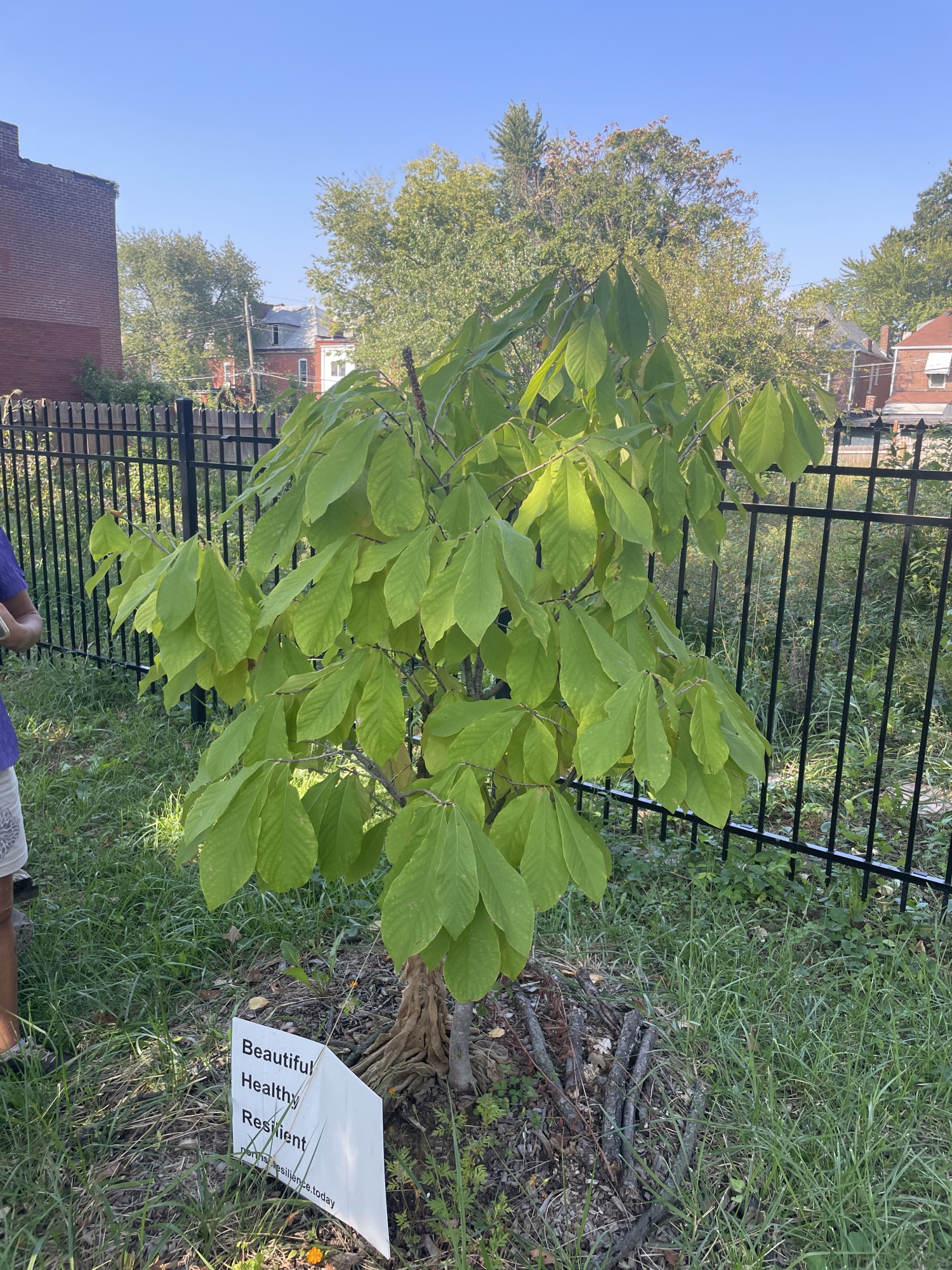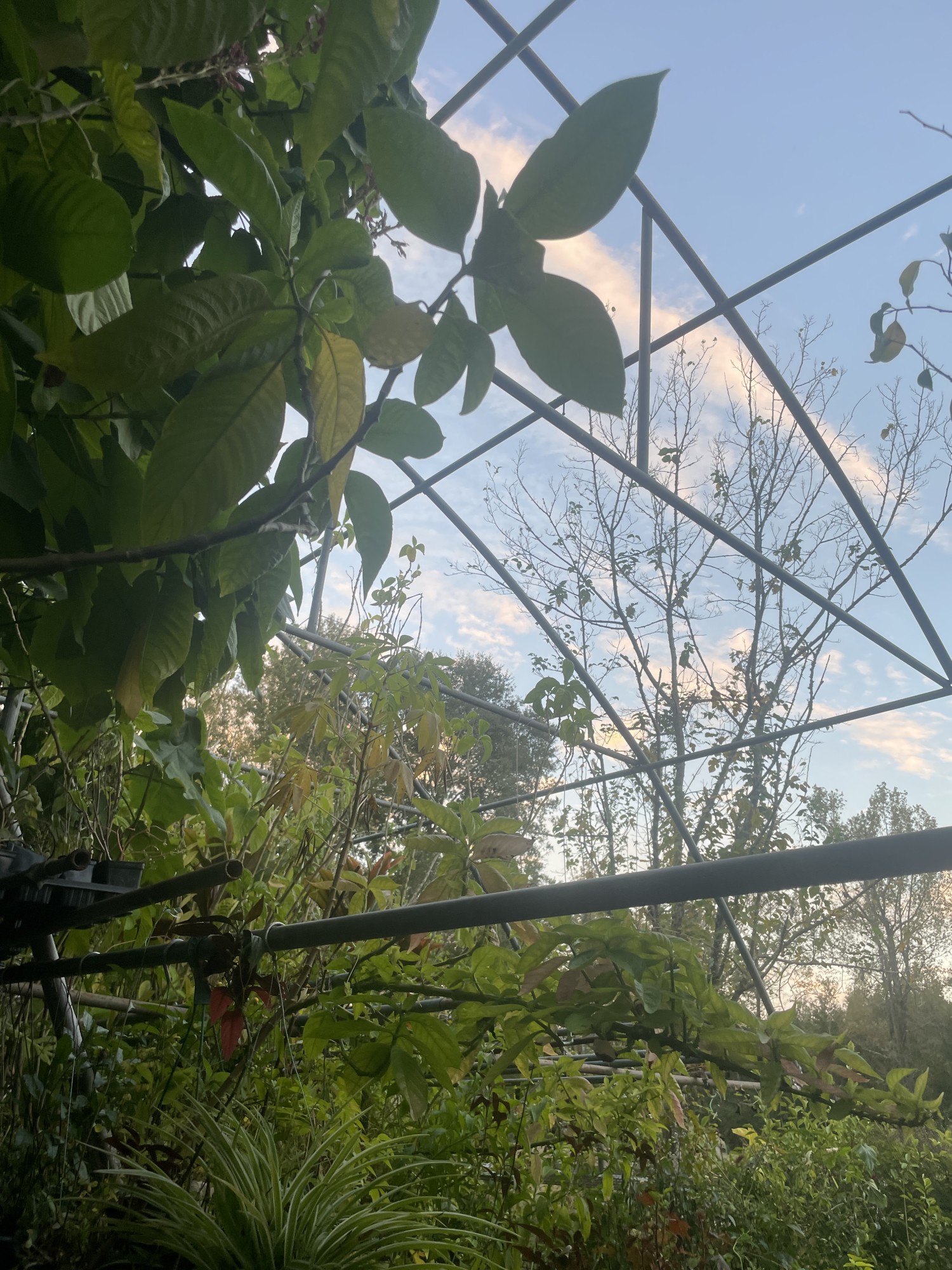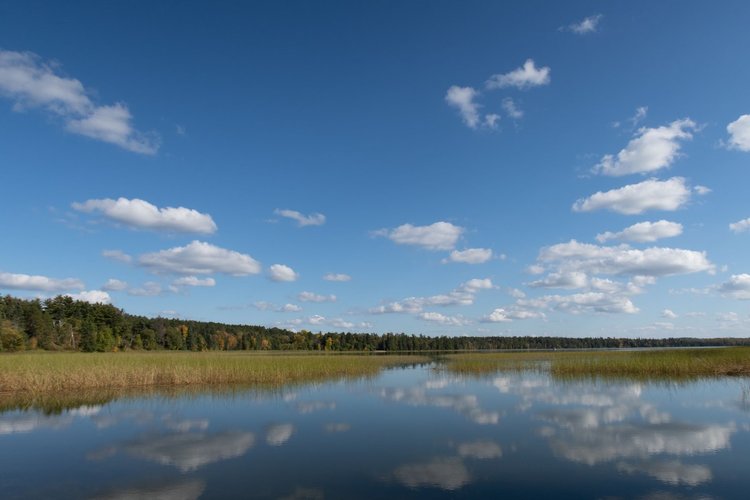This recipe is a part of the Mississippi Mud Book of Recipes.
The Landmark Farmer's Market in the East Orange neighborhood in Memphis had rules; Co-founder and head gardener Mike Minnis made sure we knew them. No cussing or running was allowed in the garden, neither was smoking or consuming alcohol. "But most of all," he says, shifting from sincere to cautionary, "do not–and I mean not hand, arm, or leg–do not touch the plants." There's a moment of silence before he gathers us in his arms breadth with a small smile and says "come on, let me show you how it's done."
We follow him behind the white store with orange trim into a volcanic eruption of stark green life. He leads us through the garden, leaning his weight on a cane but strong as the rows of fruit trees that tower over the neighborhood. He explains how to cure depression and Alzheimers with coriander and describes the benefits of an annual bodily detox (gives the organs a break in their constant exercise of moving processed foods through our body). He gestures to the loofah vines that canopy the garden as a community member shells black walnuts in pecan-colored water. He describes the three best fertilizers that he's tested and been able to produce from livestock in pools and earthen mounds on the property (red worm, fish, and chicken poops). He describes the year-long growing cycle in Memphis and the volcanic rock minerals that the river deposited on his land for the past millennia, "these rocks make these plants grow like crazy!" He explains how horses and gorillas are both vegans "and can carry their own weight at birth. Huge, strong creatures!" He takes us to the apiary, "I've been beekeeping for years, and I always get stung. I taught my daughter how to take care of the bees, and she never gets stung. You know why? We have different prerogatives. She wants to take care of the bees, I just want the honey." He shrugs and we move on. He mutters again, almost to himself "do it for the bees, not the honey."
The Landmark Farmer's Market is the work of married couple Mike and Karen Minnis, and the whole garden is only situated on a half acre of land. Mike told us, "you only need a half acre to have a sustainable farmer's market." They make five tons of produce a season, and distribute it to East Orange, a Black neighborhood in southeast Memphis. The community helps them, and they give back through training in agriculture, fresh produce and herbal medicine.
Community gardens are described flippantly by the ignorant as "sustainable" forms of agriculture. But for most, especially those without access to fresh produce in their community, sustainability extends beyond just environmentalism buzzwords. As Mike Minnis made sure to remind us, "Another aspect of sustainability is self-sufficiency." I heard this mantra echoed in Black and Indigenous gardeners up and down the whole river valley. Self-sufficiency is the key to community survival. Another aspect of sustainability is finding a means for passing down narratives and knowledge about the land and the biodiversity that grows on it, and that's largely done through food for Black and Indigenous people. Kinship is no longer something that is merely a goal for marginalized communities, but necessary for survival.

Dail Chambers runs a few community gardens under the name North St. Louis Resilience. In some places, North St. Louis resembles a rural farmstead, large vacant lots are left where there once stood infrastructure for Black communities; torn down by the city to sell to developers in an act of "urban renewal." During COVID, Chambers began buying up land that the City planned to offer to developers for $28 an acre. She began to introduce an abundance into the neighborhood through these "Coahoma Orchards" and frequent neighborhood meals as she told us over the phone in one of her gardens in the Jeff Vander Lou Neighborhood, "The garden is about taking care of eachother."
Community Gardens like Landmark and Coahoma Orchards exemplify kinship ideals present in Native cosmologies. The Lakota live by the principles of "being a good relative," kinship is recognizing that a sustainable system of living cannot be a result of domination. When Mike Minnis speaks of taking care of the bees rather than the honey, he speaks of a relationship that goes beyond commodity. Kinship requires a relationship that doesn't disconnect us from our sources of food and all of the factors that go into making that food accessible. That doesn't mean we need all of our food to grow in our backyard. Kinship today requires us to go beyond optics. Community groups like A Red Circle in North St. Louis find food shares through grocery stores, and surplus from Black and Indigenous farmers outside of the city.
Kinship is predicated on social healing and the physical and mental health of the community. Respiratory illness is common in North St. Louis where chemical fires burn underground and particulate matter from industry turns the sky orange. Cardiovascular illness is also common in communities with high concentrations of commodity foods. Dale Chambers tells us about social pollination projects, where she interviews neighbors to ask what medicines they would like to see growing in the gardens. The goals of these orchards are to fight climate change and allow for shade in a hot, black concrete neighborhood. "The things that grow up around you are the medicine you need," Chambers says. Right now, Chambers has 40 perennial herbs and flowers growing in her gardens.
Along with fostering communities of care, these gardens work for the propagation of communal and cultural narratives. In North St. Louis alone, Chambers's social pollination projects give space for locals to request the native foods and medicines of their family and homeland. "Sioux Chef" Sean Sherman in Minneapolis has created the Indigenous Food Lab, effectively a test kitchen for pre-colonial ingredients and meals grown locally in Minnesota. Not just in urban gardens, but in rural communities as well. Preserving narrative history also requires work and solidarity between farmers inside and outside the city. The urban gardens we encountered in Minneapolis, St. Louis, and Baton Rouge bridged the gap between rural and urban growers. There are many food hubs and cooperatives in North St. Louis, including organizations that teach people how to produce and process foods in their own communities, learning about history, culture and medicine. Basmin told us "when we start eating native foods again–we will start to remember stories."
All of the Black and Indigenous gardeners and activists we encountered on this trip recognized the importance of food education as an exercise of sovereignty. St. Louis Indigenous artist and activist Saundi McClain-Kloeckener has a medicine program, reintroducing native foods and health products to communities. The Water Protector Welcome Center in Northern Minnesota is planning on hosting seasonal camps, run by the Wakemups family, for hunting, ricing, and sugar bushing. These Indigenous practices operate in a tense balance between US and Tribal Government licensing and family dynamics and lack of land and funds. But these practices are also necessary for life, as sustaining a lifeway is dependent on traditional practices. Land, food, and survival are intertwined and catastrophically threatened for Indigenous and Black populations in America. You control the food, you control the people. The first step to liberation is food sovereignty.
Monique Verdin, a Houma activist based in the Yakni Chito between the Atchafalaya and Mississippi Rivers affirmed this sentiment. Between these two rivers live many different yet interrelated tribes, making establishing a single identity group impossible and harmful to cultures and familial bonds. Because of this, Indigenous people in Southern Louisiana have struggled to receive recognition of their sovereignty. Verdin told us that "many indigenous people have realized they need to assert their sovereignty in this region…sovereignty starts with food security." The largely Indigenous and Cajun residents of barrier island Isle de Jean Charles were, and are, subsistence farmers. In 2014, they were the first to receive a federal relocation grant in response to land displacement from sea-level rise and increased hurricane damage. They were moved 30 miles inland, into $200,000 houses that they were forced to pay taxes and insurance on. They are a people who built their communities and fed their families on fat fish and bottomless crawdad. Verdin says, "What are they gonna do now? Work at Walmart?"
Andeab and Mila Berhane's Greenhand Nursery and Red Stick Farmers Market in Baton Rouge sits on a venerable international forest on the banks of a bayou in Northern Baton Rouge. As we move through the Mississippi River Valley south of St. Louis, year-long growing seasons give non-native plants from Africa and South America opportunities to thrive. Andeab is from Eritrea, and as he leads us through the garden, he shows us various plants from East Africa that he has grown from collected seeds. For every plant, he opens up a seed casing and offers us the seeded interior. Mila is from the Dominican Republic and teaches agriculture and decorative botany at Southern University A&M in Baton Rouge. Her students and peers revere her, it's clear during our tour of the greenhouse complex. Many of the people there are alums who come to visit her and the space again. "This is my favorite place in the world," one says, "with my favorite people."

Their enormous, lush garden/forest sits on 2 acres. When I asked how many people work on it, Andeab pointed to the two of them, and then up towards the sky. In an equally important way, gardens are a journal, a record keeping of one's life and exploration of trauma. Michael W. Twitty writes that food for Black people is genetic, preparing and making southern "soul" food is a form of genealogy. The Berhanes' sons aren't interested in taking the garden from their parents when they die, but that doesn't seem to worry Mila and Andeab. For Andeab and Mila and Karen and Mike, their garden is their progeny, their love and their memory. The work of growing, sharing, and teaching about food is not a political action, but a practice necessary for being in community.
Baton Rouge–Andeab and Mila Berhane's Hibiscus Tea
Mila brought this out to us as we toured their garden, meandering around their own hibiscus and other plants native to Eritrea and East Africa.
Hibiscus Sabdariffa: a Sorrel from Eritrea, steeped in hot water.
Add Cinnamon, sugar (or honey), and Ginger to taste, serve cold over ice cubes
Mila says "Better with rum!"
New Orleans–Speakeasy Farm's Peach Leaf Tea
Steep Peach Leaves in hot water overnight. The hot water releases the tannins in the peach leaves, which will benefit our respiratory health. It especially helps in moments of hot, angry grief, when a scream or loud cry feels necessary.
Below are several of the farmers markets and urban gardens that we visited or heard about through our guides. They are worth researching, as much of their work has been monumental in efforts towards urban land reclamation, conversation and connection between the urban and rural, and community building and edification.
Minneapolis:
East Phillips Community Garden
St. Louis:
Dail Chambers: North Saint Louis Nutritional Resilience
Memphis:
Karen and Mike Minnis: East Orange Landmark Farmer's Market
Baton Rouge:
Andeab and Mila Berhane's GreenHand Nursery
New Orleans:

